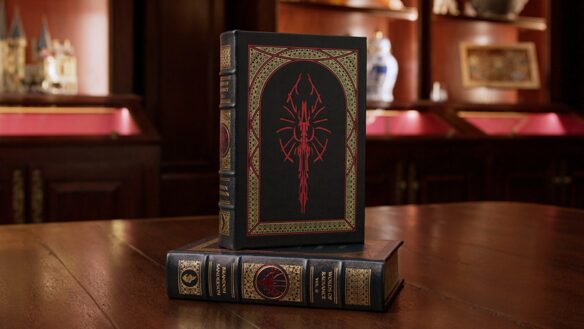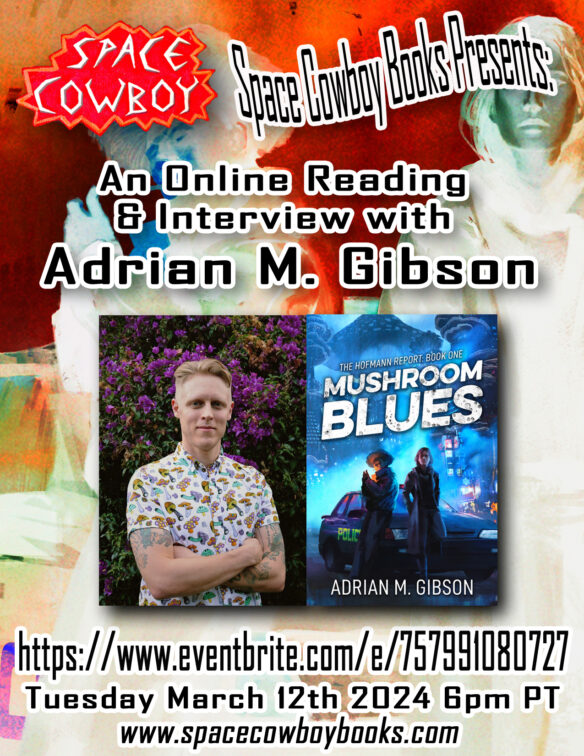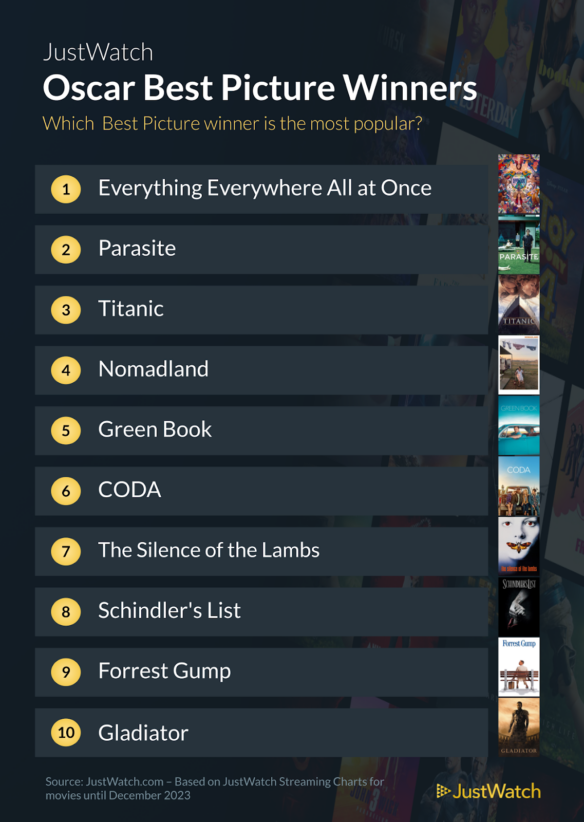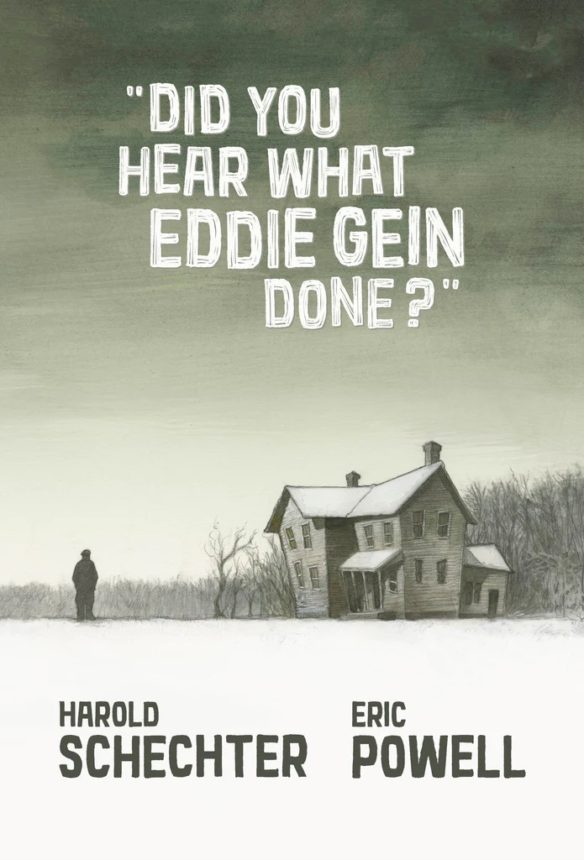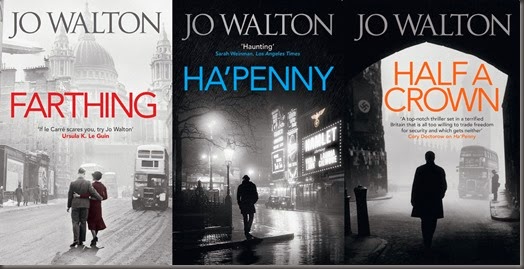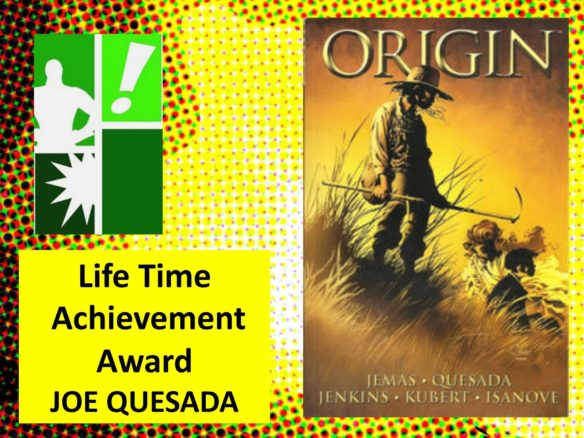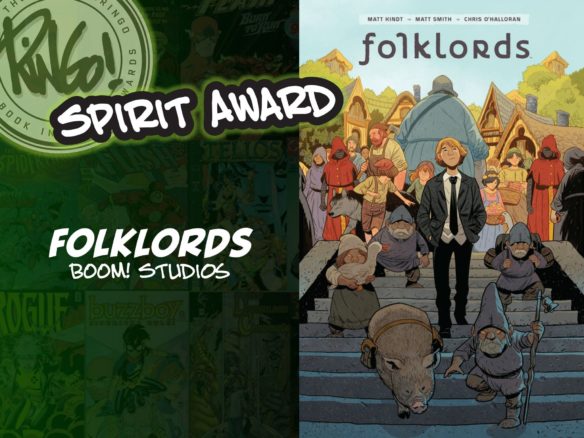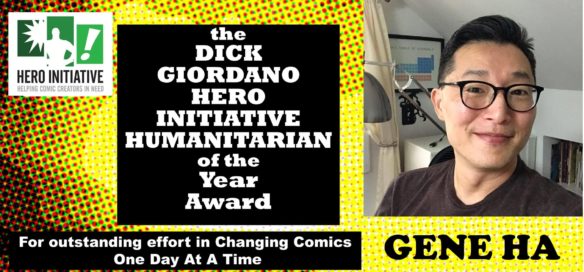(1) 2025 HUGO FINALIST ANNOUNCEMENT SUNDAY. The finalists for the 2025 Hugo Awards, Lodestar Award for Best Young Adult Book, and Astounding Award for Best New Writer will be revealed by the Seattle Worldcon committee through social media and their website at Noon Pacific on Sunday, April 6.

(2) HOW CHINA TARIFF AFFECTS BOARDGAME MAKERS. Steve Jackson Games’ Daily Illuminator says “Tariffs Are Driving Up Game Prices Now”.
On April 5th, a 54% tariff goes into effect on a wide range of goods imported from China. For those of us who create boardgames, this is not just a policy change. It’s a seismic shift.
At Steve Jackson Games, we are actively assessing what this means for our products, our pricing, and our future plans. We do know that we can’t absorb this kind of cost increase without raising prices. We’ve done our best over the past few years to shield players and retailers from the full brunt of rising freight costs and other increases, but this new tax changes the equation entirely.
Here are the numbers: A product we might have manufactured in China for $3.00 last year could now cost $4.62 before we even ship it across the ocean. Add freight, warehousing, fulfillment, and distribution margins, and that once-$25 game quickly becomes a $40 product. That’s not a luxury upcharge; it’s survival math.
Some people ask, “Why not manufacture in the U.S.?” I wish we could. But the infrastructure to support full-scale boardgame production – specialty dice making, die-cutting, custom plastic and wood components – doesn’t meaningfully exist here yet. I’ve gotten quotes. I’ve talked to factories. Even when the willingness is there, the equipment, labor, and timelines simply aren’t.
We aren’t the only company facing this challenge. The entire board game industry is having very difficult conversations right now. For some, this might mean simplifying products or delaying launches. For others, it might mean walking away from titles that are no longer economically viable. And, for what I fear will be too many, it means closing down entirely.
Tariffs, when part of a long-term strategy to bolster domestic manufacturing, can be an effective tool. But that only works when there’s a plan to build up the industries needed to take over production. There is no national plan in place to support manufacturing for the types of products we make. This isn’t about steel and semiconductors. This is about paper goods, chipboard, wood tokens, plastic trays, and color-matched ink. These new tariffs are imposing huge costs without providing alternatives, and it’s going to cost American consumers more at every level of the supply chain.
We want to be transparent with our community. This is real: Prices are going up. We’re still determining how much and where.
If you’re frustrated, you’re not alone. We are too. And if you want to help, write to your elected officials. Ask them how these new policies help American creators and small businesses. Because right now, it feels like they don’t.
We’ll keep making games. But we’ll be honest when the road gets harder, because we know you care about where your games come from – and about the people who make them.
— Meredith Placko
(3) MAD PARODIES ANTHOLOGY. [Item by Daniel Dern.] Fantagraphics is bringing out “The Sincerest Form of Parody: The Best 1950s Mad Inspired Satirical Comics” on April 29, 2025.

I have fond memories of reading (and enjoying) Mad’s musicals parodies, I can still visualize the mournful face of a short guy singing (within his speech balloon) “The ghoul that I marry…” for example. Ditto panels from their East Side Story. Here’s an example.


Killzoneblog, with more extensive details and lyric excerpts: “Mad Magazine, RIP” from 2019.
…My big brother bought Mad religiously, and thus I got the issues second hand. I learned about politics from Mad. I knew who Castro and Khrushchev were only because of the cartoon renditions within its pages.
In those years they had literate, educated satirists who were able to skewer sacred cows with a precise wit that appealed to adults, too. And the artists! Here I must call out two of my favorites—Mort Drucker, master caricaturist; and Don Martin, whose mind-bending cartoons blew right past the safe and predictable into uncharted realms of hilarity….
… Of all the talent, though, my absolute favorite was the poet laureate of Mad, Frank Jacobs, who, at age 90, is still among us. Jacobs did the libretti for many of the Mad satires of famous movie musicals. I also have a first edition of his legendary collection, Mad For Better or Verse. The amazing thing about Jacobs is that his satirical songs always scanned perfectly along with the originals. He never hit a bad note.
Here’s an example. One of the first political pieces I remember from Mad is East Side Story, a send-up, of course, of the Leonard Bernstein-Stephen Sondheim musical. It was Jacobs at his best, along with the fantastic caricatures of Drucker…
That also links to a collection for Frank Jacobs’ many MAD parody lyrics along art by Paul Coker Jr. (I’m seeing bunches of used copies of this in the highly-affordable range, in case you’re tempted — Mad for Better of Verse by Jacobs at AbeBooks.)
(4) HE WON’T CROSS THE BORDER. When the Niagara Falls Comic Con happens on the Canadian side of the falls at the end of May, American comics creator Larry Hama won’t be there. An invited guest, he’s concerned he might have trouble getting back into the U.S. afterwards. Hama’s career includes stints as a writer and editor for Marvel Comics, where he wrote the licensed comic book series G.I. Joe: A Real American Hero. He has also written for the series Wolverine, Nth Man: The Ultimate Ninja, and Elektra.

(5) HUMAN AUTHORSHIP REQUIRED FOR COPYRIGHT. “U.S. Copyright Office issues highly anticipated report on copyrightability of AI-generated works” — Reuters has the link.
…The United States Copyright Office (Office) has released Part 2 of its Report on Copyright and Artificial Intelligence which addresses the copyrightability of AI-generated works (here, opens new tab). It maintains that human authorship and creativity remain essential in the quest to obtain copyright protection for works involving materials created by artificial intelligence.
While Part 1 discusses the legal and policy issues related to artificial intelligence (AI) and digital replicas (here, opens new tab), the recently released “Part 2: Copyrightability” analyzes the type and degree of human contributions required to bring AI generated works within the scope of copyright protection in the United States, as well as the international landscape of how other countries are approaching questions of copyrightability in the AI space and the policy implications of providing additional legal protection to AI-generated material….
… In “Part 2: Copyrightability,” the Office affirms that copyright protection in the United States requires human authorship. The Office points to the foundational principles found in the Copyright Clause in the Constitution and the language of the Copyright Act as interpreted by U.S. courts which grants Congress the authority to “secur[e] for limited times to authors … the exclusive right to their … writings.” U.S. Const. art. I, § 8, cl. 8….
(6) GOOD GRIEF. We tend not to link to the Daily Mail here. In case you’ve forgotten why, consider this piece based on the TV documentary Wonderland: Science Fiction in the Atomic Age which Ersatz Culture previewed in yesterday’s Scroll — “CHRISTOPHER STEVENS reviews Science Fiction In The Atomic Age on Sky Arts: The sci-fi ‘psychic’ who predicts everyone will be gay in 100 years”. Here are screencapped excerpts.




(7) ROBERT MCGINNIS (1926-2025). Renowned magazine/paperback artist Robert McGinnis died March 10. He was a member of the Society of Illustrators Hall of Fame.
McGinnis is known for his illustrations of more than 1,200 paperback book covers, and over 40 movie posters, including Breakfast at Tiffany’s (his first film poster assignment), Barbarella, and several James Bond and Matt Helm films.
Starting in 2016, McGinnis painted a number of retro-style covers for reissues of books by Neil Gaiman.
(8) MEMORY LANE.
[Written by Cat Eldridge.]
April 4, 1914 — Edgar Rice Burroughs’ At the Earth’s Core novel
On this day, one hundred and eleven years ago, the first part of Edgar Rice Burroughs’ At the Earth’s Core novel appeared in All-Star Weekly. This magazine started life as The All-Story Magazine before becoming The All-Story and All-Star Weekly. Burroughs’ serial would run from April 4 to April 25, 1914. It would be first published in book form in hardcover by A. C. McClurg in July, 1922.
It is of course freely available at the usual suspects.
Pellucidar, a hollow Earth story, is very influential with writers using the setting later on, not the least of which is the author who has Tarzan appearing there. Lin Carter’s “Zanthodon” series, beginning with his novel Journey to the Underground World, is considered a homage to this work.
And the Skartaris setting used by Mike Grell in The Warlord series is another homage to Pellucidar in the graphic medium. Justice League Unlimited’s “Chaos at the Earth’s Core” episode would show the hollow Earth in an animated medium. It’s quite wonderful even if, like the Arthur Conan Doyle’s The Lost World series, it has very, very little to do with the source material. That animated series is streaming on Max.
Wiki claims that Lovecraft’s At the Mountains of Madness was largely influenced by this work. Huh? Please someone explain.
The novel has been filmed once as At the Earth’s Core in 1976 as directed by Kevin Connor and starring Doug McClure as David Innes and Peter Cushing as Abner Perry.
It fared badly among critics and audience reviewers alike at Rotten Tomatoes, garnering just thirty-three and thirty-four percent respectively. My favorite critic comment? This one by Stephen Randall of the Los Angeles Free Press: “It’s the type of movie you can send your kids to, but only if you don’t much like them.” Ouch. Really ouch.
If you really must, and have nothing else at all else to watch, it is streaming on Prime. Yes, I did watch it with the Suck Fairy. Neither of us was at all happy we did. Ellen Kushner’s hot chocolate was needed.

(9) COMICS SECTION.
- Close to Home encounters side effects.
- MythTickle has the historic video.
(10) RINGO AWARDS TAKING NOMINATIONS. Public nominations for the Mike Wieringo Comic Book Industry Awards – the Ringo Awards – opened today and will through June 19.
The Mike Wieringo Comic Book Industry Awards is an annual celebration of the creativity, skill, and fun of comics. The awards return for their ninth year on Saturday, October 18, 2025 as part of the fan- and pro-favorite convention, the Baltimore Comic-Con.
Unlike other professional industry awards, the Ringo Awards include fan participation in the nomination process along with an esteemed jury of comics professionals.
More than 20 categories will be celebrated with top honors being given at the awards ceremony in October.
Fan and pro-jury voting are tallied independently, and the combined nomination ballot is compiled by the Ringo Awards Committee. The top two fan choices become nominees, and the jury’s selections fill the remaining three slots for five total nominees per category. Ties may result in more than five nominees in a single category.
(11) WEIRD FANTASY BEGINS. “75 Years Ago, One of the Most Iconic Sci-Fi Comic Series Made Its Debut” – the anniversary is celebrated by CBR.com.
Who inspired the launch of Weird Fantasy?
As noted, Gaines was a very open-minded guy, and so Harry Harrison, who was working in an art partnership with Wallace Wood (Harrison would pencil the comics, and Wood would ink them, although sometimes the lines blurred between who was penciling and who was inking. The two had first met while both were studying with artist Burne Hogarth, but they didn’t start working together until Wood had already started working at EC on his own), approached Gaines about EC doing science fiction comics. He gave Gaines some science fiction books to read, and Gaines was quickly hooked, and so he approved the new series.
The series was edited by Al Feldstein, though, who was becoming Gaines’ top editor/creative partner at the company. Harrison had no control over the idea he inspired, so he and Wood would actually split up their partnership by the end of 1950, and Harrison would go off to become a popular science fiction author….
(12) ARTEMIS II PATCH ART. “NASA’s Artemis II astronauts reveal moon mission patch to honor ‘AII’” at CollectSPACE.
The next astronauts to fly to the moon now have a mission patch to represent their history-making journey.
NASA on Thursday (April 3) debuted the official Artemis II insignia, its first emblem for a moon-bound crew in more than 50 years. Astronauts Reid Wiseman, Victor Glover, Christina Koch and Jeremy Hansen will wear the patch when they launch on the Artemis II mission, currently targeted for no later than April 2026.
“This patch designates the mission as ‘AII,’ signifying not only the second major flight of the Artemis campaign, but also an endeavor of discovery that seeks to explore for all and by all,” wrote the crew in their description of the mission patch.
The emblem includes design elements that symbolize the past, present and future of human space exploration.
Borrowing the same outline as NASA’s Artemis program patch (as well as the shape of the “A” in “AII” and the red trajectory line forming the crossbar of the “A” and the path between Earth and the moon), the border frames an artistic depiction of “Earthrise.” The now-iconic image of our home planet hovering above the lunar horizon was captured by the Apollo 8 crew, the first humans to fly to the moon.
The Artemis II crew will not enter lunar orbit like Frank Borman, Jim Lovell and Bill Anders did in December 1968, but will share in seeing some of the same sights as they did while flying beyond the moon and then looping back to return to Earth….

(13) LOCH NESS CANDID CAMERA. “Scientists Recover Underwater Camera Designed to Snap Photos of Loch Ness Monster” reports Futurism.
In 1970, a cryptid-obsessed biologist placed several cameras inside plastic trap boxes and sent them down to the depths of Scotland’s Loch Ness in hopes of finally capturing compelling evidence of its storied monster — and now, it appears that one of those cameras has been recovered by sheer accident.
As USA Today and other outlets report, one of the cameras deployed by University of Chicago biologist Roy Mackal some 55 years ago was discovered during a test dive of an unmanned research submersible in the famed lake in the Scottish Highlands.
Specifically, the camera trap’s mooring system appeared to have gotten tangled up in the propellers for the submersible, which was named, much to the chagrin of the British government, “Boaty McBoatface” by the public in a viral poll in 2016…
… When researchers developed the Instamatic’s film, they unfortunately didn’t find any photos of Nessie, though they did recover some beautiful, eerie photos of the deep, dark lake…
[Thanks to Cat Eldridge, SF Concatenation’s Jonathan Cowie, Mark Roth-Whitworth, Daniel Dern, Steven French, Kathy Sullivan, Teddy Harvia, Mike Kennedy, Andrew Porter, John King Tarpinian, and Chris Barkley for some of these stories. Title credit belongs to File 770 contributing editor of the day Daniel “Music Man” Dern.]




